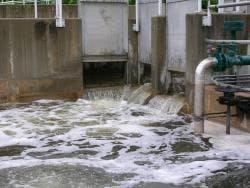The Water Environment Research Foundation (WERF) is launching its second project under the U.S. Environmental Protection Agency funded National Research Center for Resource Recovery and Nutrient Management by awarding Columbia University with a contract to explore sustainable nitrogen removal.
Given the increasingly stringent wastewater treatment and nutrient discharge standards, there is a critical need for the development and implementation of cost-efficient processes to meet these standards. This project entitled Development and Implementation of a Process Technology Toolbox for Sustainable Biological Nitrogen Removal Using Mainstream Deammonification (STAR_N2R14) seeks to provide wastewater treatment facilities with a technological breakthrough in nitrogen management practices allowing them to meet low nitrogen discharge limits at a much lower cost and using less energy.
The research for this study will be conducted through on-site pilot demonstrations at the Blue Plains Advanced Wastewater Treatment Facility, operated by DC Water, and the Chesapeake Elizabeth Wastewater Treatment Plant, operated by the Hampton Roads Sanitation District (Virginia).
Source: Water Environment Research Federation


